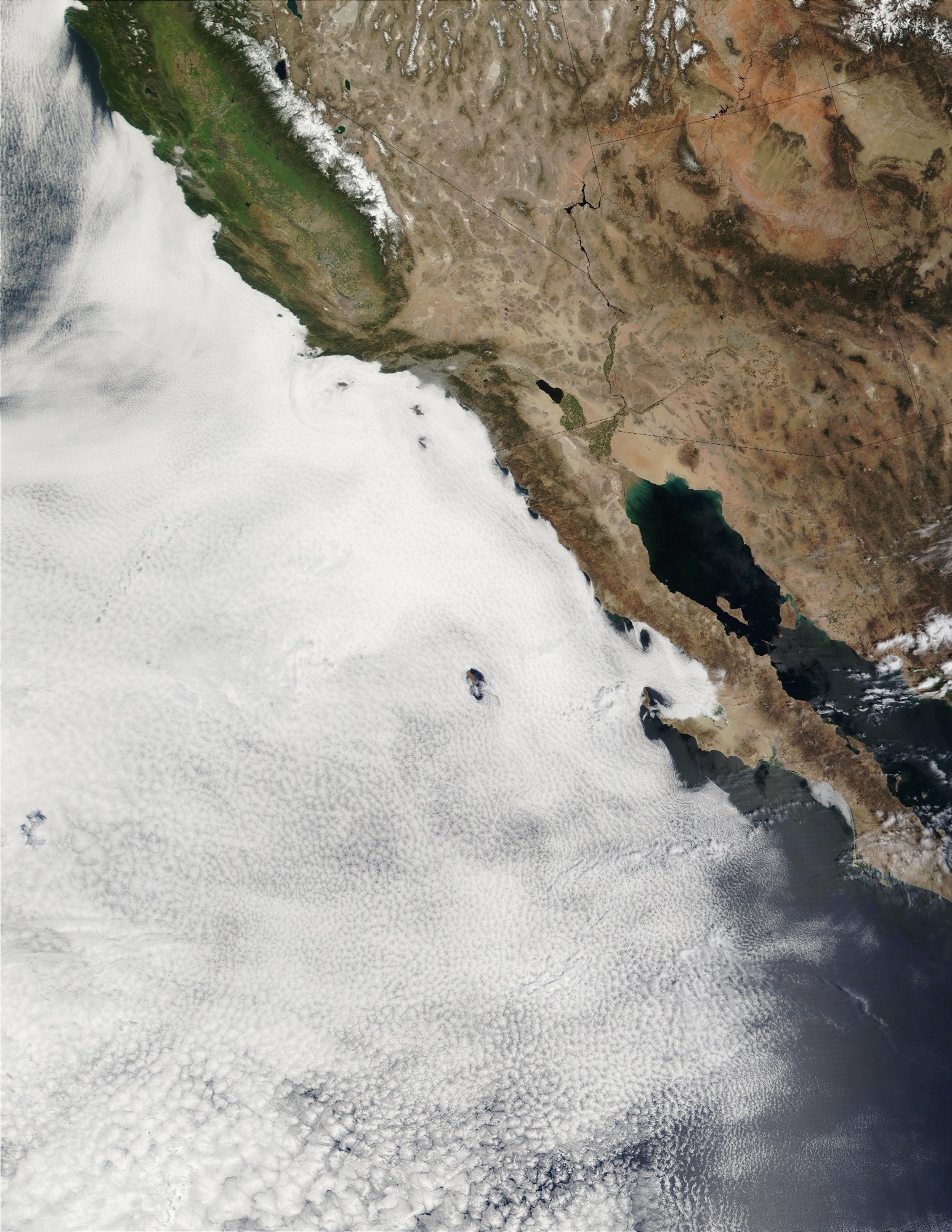Reviewed by Mila PereraOct 25 2022
A study performed at the University of California, Davis, has displayed that cloud cover and air temperature are impacted by the buoyancy effect of water vapor. This was an effect currently ignored in a few chief global climate models.

Clouds form over the California coast in 2002. Image Credit: NASA
The study has also been reported in the Nature Geoscience journal.
Global climate models are the main tools employed to study Earth’s climate, forecast its future changes, and inform climate policymaking. However, climate models often vary on the exact degree of future warming. This is largely a result of their representation of clouds.
Climate models are the best tool we have to predict future climate change. It’s important that we actively try to improve them.
Da Yang, Study Lead Author and Assistant Professor, Atmospheric Science, University of California Davis, faculty scientist, Lawrence Berkeley National Laboratory
Does Cold Air Rise?
Traditionally, it has been believed that hot air rises; however, the reverse seems to be true in the tropical atmosphere. An early study by Yang and his collaborators suggested that cold air rises in the tropics since humid air is lighter than dry air. This effect is called vapor buoyancy and controls the number of low clouds through the subtropical ocean.
Vapor buoyancy influences the distribution of low clouds—the kind of clouds we have off the California coast, which contribute greatly to the global energy balance. The biggest challenge in accurately predicting future climate change is clouds, so we have to get vapor buoyancy right.
Da Yang, Study Lead Author and Assistant Professor, Atmospheric Science, University of California Davis
The study stated that six of the 23 extensively utilized climate models analyzed do not yet include this effect since water vapor is a trace gas, so its buoyancy effect has been seen as insignificant.
However, the study shows the vapor buoyancy effect is much more significant than previously believed. In climate models without vapor buoyancy, the low cloud cover can be off by around 50% in a few regions.
How Clouds Affect Climate Change
Low clouds are among the most significant clouds for climate change and the planet's energy balance since they tend to reflect significant sunlight. Fewer low clouds can lead to a warmer planet and more absorbed sunlight. More low clouds could make for a cooler landscape.
In a warmer climate, the buoyancy effect of water vapor would be increasingly important due to more atmospheric water vapor. It is worth spending more effort to understand how water vapor buoyancy regulates Earth’s climate.
Da Yang, Study Lead Author and Assistant Professor, Atmospheric Science, University of California Davis
The additional co-authors of the study include UC Davis graduate student Seth Seidel and Wenyu Zhou, a former member of Yang’s group, now at the Pacific Northwest National Laboratory.
The study was financially supported by the Packard Fellowship for Science and Engineering, National Science Foundation, Lawrence Berkeley National Laboratory, and the U.S. Department of Energy.
Journal Reference
Yang, D., et al. (2022) Substantial influence of vapor buoyancy on tropospheric air temperature and subtropical cloud. Nature Geoscience. doi.org/10.1038/s41561-022-01033-x.